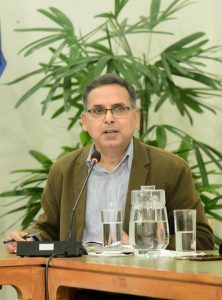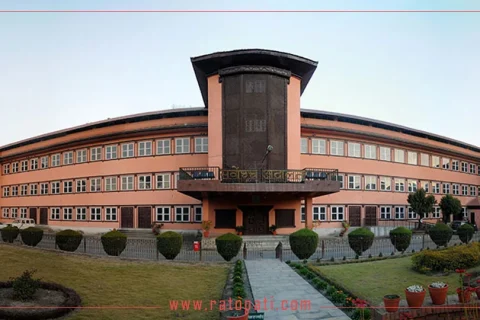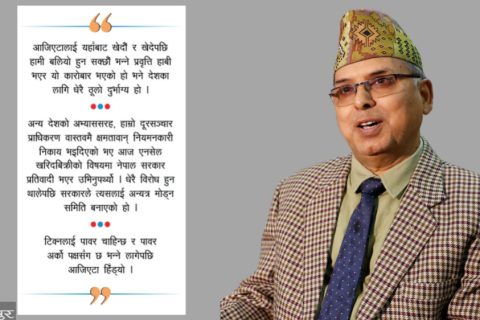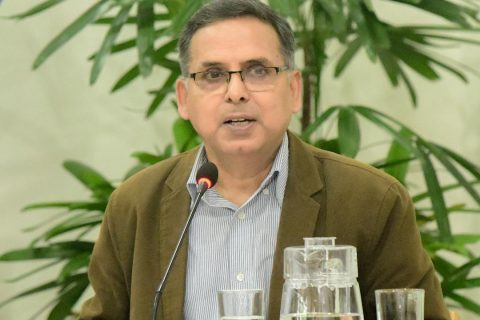The Ranas ruled Nepal for 103 years with the force of the oppressive hereditary prime ministershipinitiated by Jang Bahadur Rana in 1846. Padma Shamsher JBR, the 8th Rana to rule the country, was the prime minister for just two years andfive months, from 29 November 1945 to 30 April 1948. His most outstanding achievement was promulgating the first constitution of Nepal, the Government of Nepal Act, 1948, (Kathmandu: Government of Nepal, 1948).Even though the Constitution was short-lived, it was an important development for the eventual introduction of constitutional democracy in Nepal.
The first Constitution lacked the Rana regime’s decisive political back-up because Padma Shamsher, the main architect of the Constitution, resigned just a couple of months after its promulgation, and his successor, Mohan Shamsher, the ninth and the last hereditary prime minister, and his new coterie in the power structure were unable to honor it. This, in turn, helped magnify what Leo E Rose described as the ongoing, “small scale but persistent internal disorders” against the regime, which later transformed into an armed revolution.
Then, following the end of the Rana regime, King Tribhuvan introduced a new government together with the promulgation of the Interim Constitution Act 1951, known as the second constitution of Nepal; this Act promised to draft and adopt a full-fledged constitution through an elected constituent assembly. Article 73 of the new Act repealed Padma Shamsher’s Constitution.Opposition groups and civil societies were ready toabide by his Constitution, and he believed that this constitution would endure for ages, gradually opening new vistas for the otherwise closed and despotic country.
At 66, when Padma Shamsher wrote the first constitution,he had not inheriteda specific liberal legacy from his father, Prime Minister Bhim Shamsher, or from his mother,Kanchi Bada Maharani. Rather, his predecessor, Prime Minister Juddha Shamsher,had remained authoritarian, save for some reforms, and did not entertain any ideasabout constitutional change. Padma Shamsher’s successor, Mohan Shamsher failed at both introducing democracy in the country and quelling the evolving revolution. However, when the British exited the sub-continent, the Ranas lost the support they had traditionally received from the British. Ranas also feared that India might retaliate because Nepal had stood with Britain in its colonization of India.It was using democracy as a bargaining chip to protect its interests in Nepal.
Still, Padma Shamsher understood that themeagre possibility of continuity of the Rana regime, even for just a couple of more years, depended on the active implementation of aConstitution that, although notvery democratic,possessed some progressive elements in a politically-immobile country. In this environment, the aging Padma Shamsher was certainly a rare Rana who wanted to accommodate the growing democratic movement, and the possible Indian hostilities.Had the Constitution survived, arguably, the country would have celebrated the 71st constitutional anniversary in January 26, 2020.Now, the first Constitution simply possesses academic importance, but even after 71 years of its promulgation, it has not been seriously studied.
The first Constitution was first in its variousapproaches to government as well as constitutional functionaries. The idea of having a new written constitution to limit the exercise of power itself was a very high-sounding thought at the time. For the first time, with this new instrument, “fundamental rights”of the citizens(including the freedom of person, freedom of speech, liberty of press, and freedom of assembly and discussion) were officiatedinNepal. Acknowledging these rights explicitly would, as Padma Shamsher put it, create”provision for [citizens]in a manner similar to that which obtains in the advanced countries of the world.”
The creation of a Council of Ministers, which allowedrepresentation of popularly-elected members of the legislature,contrasted greatly with the feudal arrangement of Nepal. In an effort to moldthe elective system of the West with the local panchayat system at the village level,Padma Shamsher designed a central legislature based on the mixed model of election and nomination of members. Bicameralism at the center, with itsrecognized power and authorities, was to be instituted as a completely new constitutional feature,providingspace for both elected and nominated members. All adults were conceded with the right of the vote. The Act included a provision for the appointment of an Auditor-General to evaluate government finances and a Public Service Commission to select people for civil service.
The first Constitution also envisaged the establishment of an independent judiciary for the first time. The Supreme Court (Pradhan Nyayalaya) was to be established as a court of records, and a Judicial Committee was also to be formed from among the members of the legislature (two members from special qualifications from outside) to act as the Supreme Court of Appeal in special cases, frame rules and regulations for the administration of justice, and, more importantly, to interpret the Constitution in the case of disputes regarding its provisions. Together, continuity was given to the panchayati adalat system at the grassroots level. At the higher levels, justice was kept independent ofand separate from the executive. Judges were not liable to dismissal within the limit of their retiring age unless they were recommended for removal by the legislature, and their salaries were not subject to arbitrary increase or decrease.
The Constitution’s Article 68 (a) created hope for the commoners. The Prime Minister was to constitute a commission at the expiration of seven years, if not earlier, from the commencement of this Act for the purpose of inquiring into the government’s activitiesper the Constitution, the growth of education, and the development of representative institutions, and matters connected therewith. This commission was to report on whether and to what extent it is desirable to extend, modify or restrict the degree of constitutional advancement existing therein. Nearly half of the commissionwas to be elected by the legislature itself. The door for constitutional evolution was thus kept open.
Appearing to be apologetic for his tardiness in introducing constitutional reforms, Padma Shamsher noted during the promulgation ceremony of the Government of Nepal Act: “It is not a fact that no attempt was made during this long period to associate the people with the government in the administration of the country, but all attempts failed because the time was not yet ripe. For example, a parliamentary cutchery was established in Basantapur in the year 1851. The government of the day was so enamored of the British system that it desired to introduced the same kind of parliamentary institutions here, in which the people’s will might find expression. But the people showed energetic disapproval, because they thought that Nepal, which had previously been brought to the verge of catastrophe by the multiplicity of leadership, was again been led on the same path in imitation of foreign manners and customs. The experiment to introduce parliamentary institutions had perforce to be dropped.”
Referring to the second effort in this regard, he added further: “Again in 1918, an attempt was made in the same direction with the introduction of the elective system in the municipality of the capital[as a first step]. But there was much disorder in the city during the election, and communal quarrels and breaches of peace occurred among the city dwellers, who had been living heretofore in the peace and mutual co-operation, and so the election had to be abandoned and an arrangement had to be made for the selection of members by the government in order to carry on the municipal administration.”
In the pursuit of constitutional reforms, on February 13,1947, Padma Shamsher was on record for declaring that an arrangement that associated the people more closely with the government, which was the case in a greater part of the world, would contribute greatly to the progress of the country. However, he made no effort to engage with the common people in his constitution-drafting process, let alone dissatisfied groups and civil society. He consulted his cousins, nephews and councilors and conducted several deliberations with them on the subject of reform. He also formed aReforms Committee in April 1947 to study all such inputs.
Padma Shamsherthusnoted: “…the membersof the reforms committee discussed the subjects among themselves, and also held consultations with experts from India.” These experts were Prakash Gupta, Raghunath Singh and Ram Ugra Singh. “Though the draft of the consultations was soon ready,”he emphasized, “it took longer to frame the rules and regulations thatwere necessary to make it operative.”He reminded the people that “these constitutional reforms were intended to be very first step which other states, and our neighbours, did in two or three stages, and at long intervals.”
The Government of Nepal Act was certainly not up to the mark. It was better than what existed before, in terms of embodying democratic ideals, because nothing existed in contemporary Nepal that limited the power of the government. In its final form, the Constitution did not change the status of the titular king, who traditionally was the sovereign of the day, and did not constitutionalize multiparty democracy, which would make it possible to provide the necessary political representation of the people.The Constitution assumed the hereditary right of the Ranas family to the offices of the Prime Minister of Nepal and Maharajaship of Kaski and Lamjung. The hereditary prime minister, not the government of the day, was given the power to suspend orwithdraw the Constitution if emergency situationsso required. The Prime Minister had the power to veto any motion, and his assent was required for any bill to become law.The national budget was to originate from the Prime Minister who would lay it before the legislature.
Despite these challenges, the Constitution began and snowballed into something that had never happened before.This was the reason that B. P. Koirala, who provided intellectual leadership to the 1950-51 Revolution, was ready to give Padma Shamsher’s Constitution a chance. Of course, destiny proved to be different.








